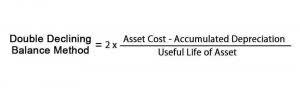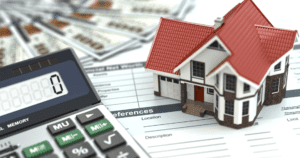DDB Excel Function Syntax, Examples, How to Use?

Under the straight-line method, the 10-year life means the asset’s annual depreciation will be 10% of the asset’s cost. Under the double declining balance method the 10% straight line rate is doubled Accounting for Churches to 20%. However, the 20% is multiplied times the fixture’s book value at the beginning of the year instead of the fixture’s original cost.
Steps:
Accelerated depreciation methods, such as double declining balance (DDB), means there will be higher depreciation expenses in the first few years and lower expenses as the asset ages. This is unlike the straight-line depreciation method, which spreads the cost evenly over the life of an asset. Declining balance method of depreciation is an accelerated depreciation method in which the depreciation expense declines with age of the fixed asset.

What are the advantages of using the double declining balance method for depreciation?
- This allows companies to better match the pattern of an asset’s decreasing productivity and economic usefulness over time.
- Under the double-declining balance method, the depreciation schedule is altered in the final years to prevent the asset from being depreciated below the residual value.
- Unlike SL and UOP depreciation, DDB depreciation ignores residual value until the end of an asset’s life.
- No depreciation is charged following the year in which the asset is sold.
- After the first year, we apply the depreciation rate to the carrying value (cost minus accumulated depreciation) of the asset at the start of the period.
Subsequently, this figure is multiplied by two to establish your double declining balance depreciation rate. The Double Declining Balance (DDB) method is a widely-used accelerated depreciation technique. It allows business owners to account for the depreciation expense of a fixed asset in a faster way, providing significant tax benefits in the early years of asset usage. This section delves into the concept of the Double Declining Balance and how it is calculated, providing an overview of its significance in accounting and asset management. Let’s assume that a retailer purchases fixtures on January 1 at a cost of $100,000. It is expected that the fixtures will have no salvage value at the end of their useful life of 10 years.

Using DDB for Varying Asset Types

In the final year, the asset will be further double declining balance example depreciated by $2000, ignoring the rate of depreciation. For accounting purposes, companies can use any of these methods, provided they align with the underlying usage of the assets. For tax purposes, only prescribed methods by the regional tax authority is allowed. Under the generally accepted accounting principles (GAAP) for public companies, expenses are recorded in the same period as the revenue that is earned as a result of those expenses.

Declining balance depreciation is the type of accelerated method of depreciation of fixed assets that results in a bigger amount of depreciation expense in the early year of fixed asset usage. In this case, the company can calculate decline balance depreciation after it determines the yearly depreciation rate and the net book value of the fixed asset. The “double” means 200% of the straight line rate of depreciation, while the “declining balance” refers to the asset’s book value or carrying value at the beginning of the accounting period. The units of output method is based on an asset’s consumption of measurable units. It is most likely to be used when What is bookkeeping tracking machine hours on a machine that has a useful life of a given number of total machine hours.
Double-Declining Balance Method of Depreciation
It involves more complex calculations but is more accurate than the Double Declining Balance Method in representing an asset’s wear and tear pattern. This method balances between the Double Declining Balance and Straight-Line methods and may be preferred for certain assets. Transitioning from the double declining balance approach to a different depreciation method is permissible when it leads to an increased depreciation expense while adhering to accounting principles and tax laws. Such a change must be thoughtfully evaluated in order to align with both your financial objectives and legal obligations.
Impact on Financial Statements
- At the end of its useful life, the asset is said to be fully depreciated.
- To get a better grasp of double declining balance, spend a little time experimenting with this double declining balance calculator.
- This can result in a company’s profits appearing to grow in later years.
- We just looked at the double declining balance depreciation method, the others shouldn’t take too long to master.
- Choosing the right method of depreciation to allocate the cost of an asset is an important decision that a company’s management has to undertake.
- Bold City might want to use this method of depreciation for the truck if it thinks miles are the best measure of the truck’s depreciation.
On top of that, it is worth it for small business owners, larger businesses and anyone owning a rental, to familiarize themselves with Section 179 depreciation and bonus depreciation. Bench simplifies your small business accounting by combining intuitive software that automates the busywork with real, professional human support. To record the depreciation expense each year for this asset, we enter a journal entry that debits Depreciation Expense $4,000 and credits Accumulated Depreciation $4,000. As you can see in the previous chart, the depreciation expense using the Double-declining method in year four was $864, so we have a winner! At the end of the second year, we subtract the first year’s depreciation from the asset’s cost, and then apply 40% to that number.
The biggest thing to be aware of when calculating the double declining balance method is to stop depreciating the asset when you arrive at the salvage value. That is less than the $5,000 salvage value determined at the beginning of the asset’s useful life. Note, there is no depreciation expense in years 4 or 5 under the double declining balance method. The Double Declining Balance Method (DDB) is a form of accelerated depreciation in which the annual depreciation expense is greater during the earlier stages of the fixed asset’s useful life.







